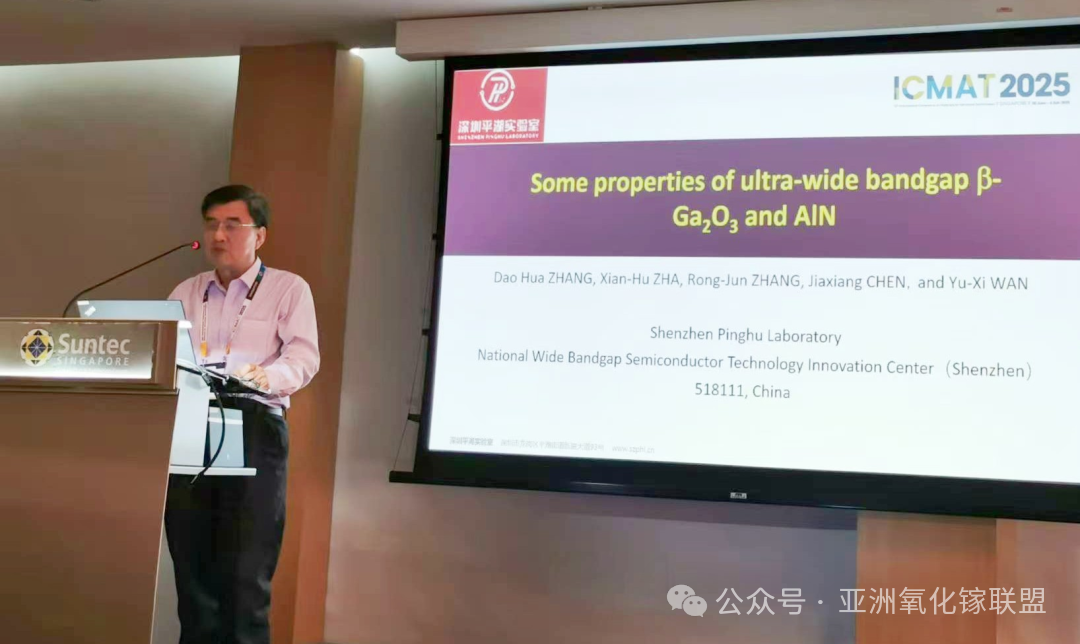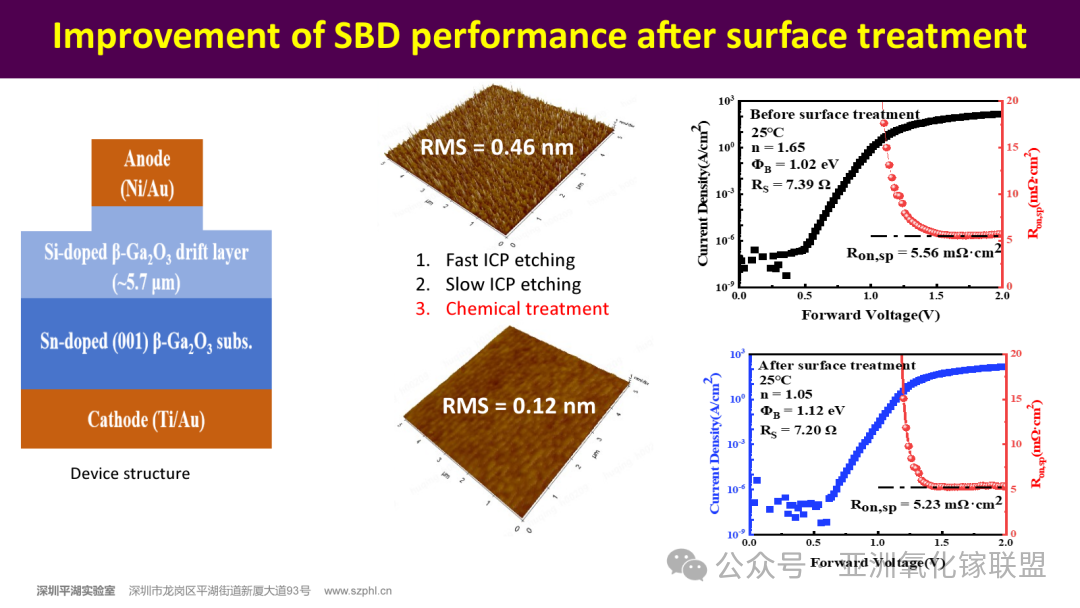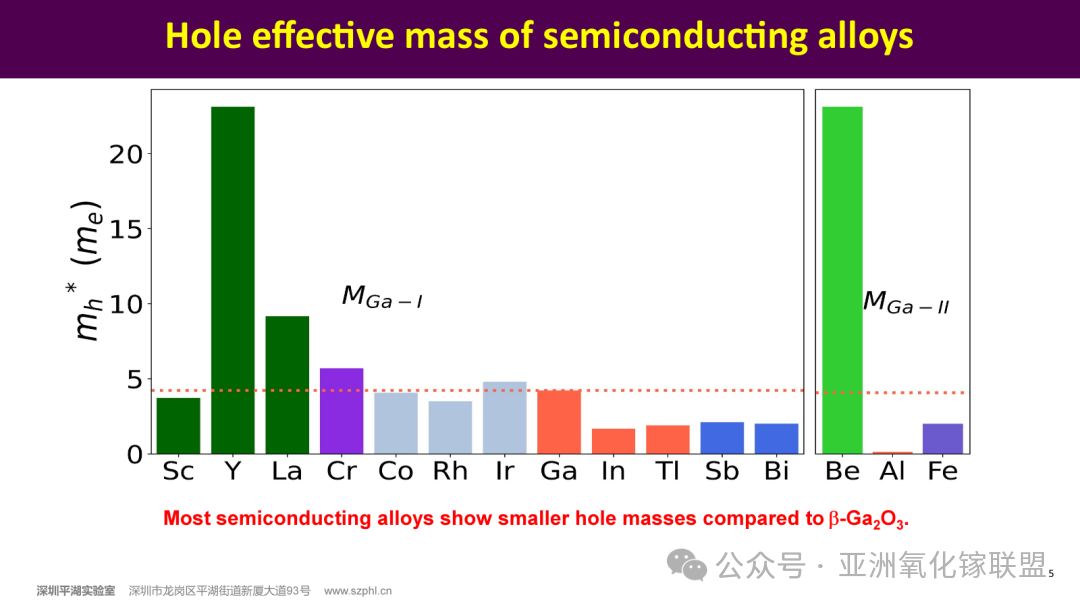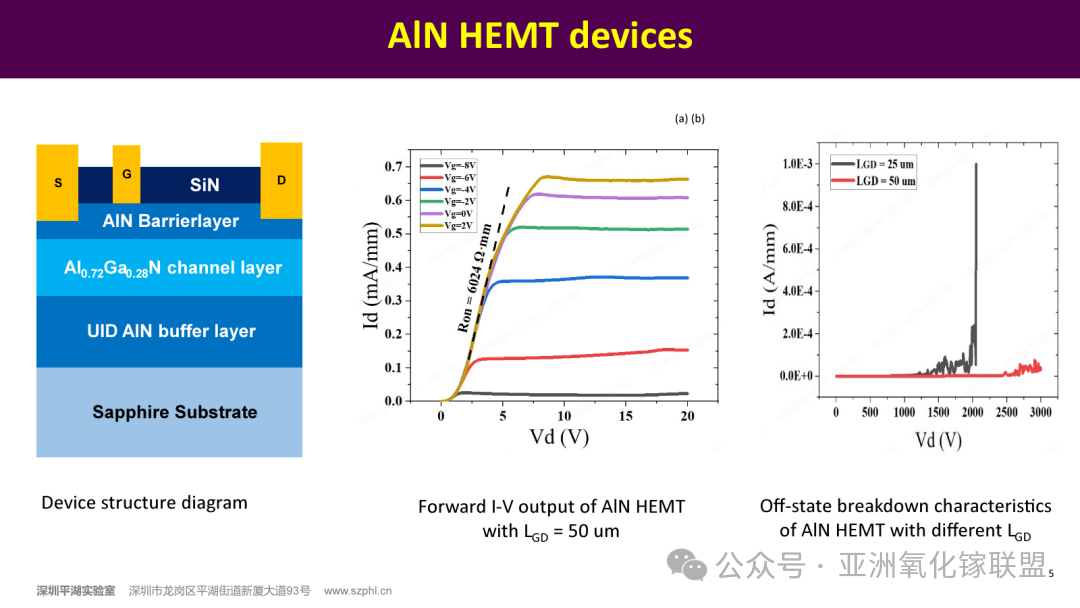
【Member News】Academician Zhang Daohua of Shenzhen Pinghu Laboratory was Invited to Attend the ICMAT2025 and Gave an Report at the Wide Bandgap Semiconductor Parallel Session
日期:2025-07-20阅读:263
Professor Zhang Daohua, chief scientist of the Fourth Generation Materials and Devices Research Group of Shenzhen Pinghu Laboratory and academician of the Singapore Academy of Engineering, was invited to attend the ICMAT2025 held in Singapore and delivered an report entitled "Ultra-wide Bandgap Research on Some Properties of β–Gallium Oxide and Aluminum Nitride" at the Wide Bandgap Semiconductor Parallel Session.

As one of the global materials science events, this year's ICMAT2025 attracted nearly 2,500 industry representatives. Since its inception, the conference has been successfully held for 12 sessions, with a total of more than 27,000 participants, including 28 Nobel Prize winners, hundreds of outstanding plenary and keynote speakers, and thousands of invited speakers.
Among them, Professor Zhang Daohua's report " Ultra-wide Bandgap Research on Some Properties of β–Gallium Oxide and Aluminum Nitride" introduced the recent important progress made by Shenzhen Pinghu Laboratory in β-Gallium Oxide and Aluminum Nitride. It mainly includes:
1) By improving the etching and cleaning process, a new method to reduce the surface roughness of Gallium Oxide was found, and the obtained 0.12nm was the best, and the ideal factor of the prepared Schottky barrier diode (SBD) reached 1.05 by reducing the surface roughness, and the current-voltage (I-V) characteristics of the device were significantly improved (Fig. 1).
2) Using the first principle, the effective mass of the hole is reduced by introducing metal atoms, and the hole mobility is improved, thereby improving the p-type doping efficiency (Fig. 2).
3) In the absence of ion implantation and narrow bandgap materials (such as secondary epitaxy) and improved breakdown voltage of the field-added plate, the breakdown voltage and specific on-resistivity of the prepared Aluminum Nitride high electron mobility (HEMT) device with LGD of 25μm were 2045V and 1736mΩ·cm, respectively. Increasing the LGD to 50 μm will result in a breakdown voltage and specific on-resistivity greater than 3 kV and 3012 mΩ·cm, respectively (Figure 3).
These scientific research results will help advance the research of ultra-wide bandgap semiconductor materials and power devices, and arouse heated discussions and widespread attention among the participants.

Figure 1. Surface roughness and its effect on I-V characteristics during SBD.

Figure 2. The effect of metal atoms introduced into Gallium Oxide on the effective mass of the hole.

Figure 3 AlN/AlGaN HEMT device structure and forward and reverse I-V characteristics.
In addition, Professor Zhang Daohua also introduced the world's first ultra-wide bandgap semiconductor material optical characterization system and high-pressure-resistant and high-power device characterization system independently designed by the team. At the same time, the core research direction, advanced scientific research facilities, key service areas, and the laboratory's plans and intentions in talent cultivation and international cooperation were introduced to the participants, which successfully attracted the strong interest of experts and scholars from many countries.


